
Ask yourself: how many movies do you know? And how many of them have you seen? These are difficult if not impossible questions to answer, right? However, there’s an easier question: how many B-movies have you seen? I’m sure you haven’t seen as many of those compared to Hollywood produced flicks.
B-movies are rarely remembered. They are movies that are not backed by a powerful producer and are financed with a limited budget. They are not made by a state-of-the-art crew, and the characters are interpreted by non-expert actors.
As a consequence of being distant from the main industry, directors have complete freedom to talk about taboo topics. Most of them, especially those from the 1970s, highlight eroticism with high passion and lust, and violence in gruesome and macabre ways. They exploit these two topics; they are “exploitation” movies.
However, due to their themes and due to them being produced outside Hollywood, they are not widely known to main audiences. Nevertheless, they were seen by outsider moviegoers and several minority audiences who developed a “cult” for these movies and this industry. Many of them are considered to be cult movies and have influenced other directors and movies, even from the main cinema industry.
The purpose of this list is to rank the most important B-movies attending to their influence and impact on other B-movies and mainstream films. The following list includes movies that belong to the different subgenres of the B-movies and exploitation films, and they have been chosen according to their current fame, influence, and general critical consensus.
15. Sharknado (Anthony C. Ferrante, 2013)

All of the B-movies we’ve talked about belong to the golden age of exploitation and grindhouse, from the 1950s to the 1980s. With the coming of globalization and the new production systems that make movies more expensive, the B-movie industry decayed, dismissing its movies to the weekend afternoon TV timeline.
Though B-movies are still produced, most of them feature cheap and lame CGI, and it is nearly impossible for them to have the same impact as they did in the past. This changed, however, with the advent of the Internet, the most effective way to promote anything. The made-for-TV movie “Sharknado” must somehow thank the Internet for its status as one of the most successful and recognizable B-movies from the 21st century.
The movie is a 50’s drive-in disaster movie on steroids; it develops around both a natural disaster and an attack by living creature, both of them badly made – a tornado that expels man-eating sharks.
With its absurd plot and badly rendered effects (first was the papier-mâché, now a cheap version of “After Effects”), “Sharknado” is the proof that B-movies might even be popular today, and they can still acquire cult following. Although we still have to wait to see the repercussions, these sharks and tornadoes must thank the Internet for their popularity.
14. Vampyros Lesbos (Jesús “Jess” Franco, 1971)
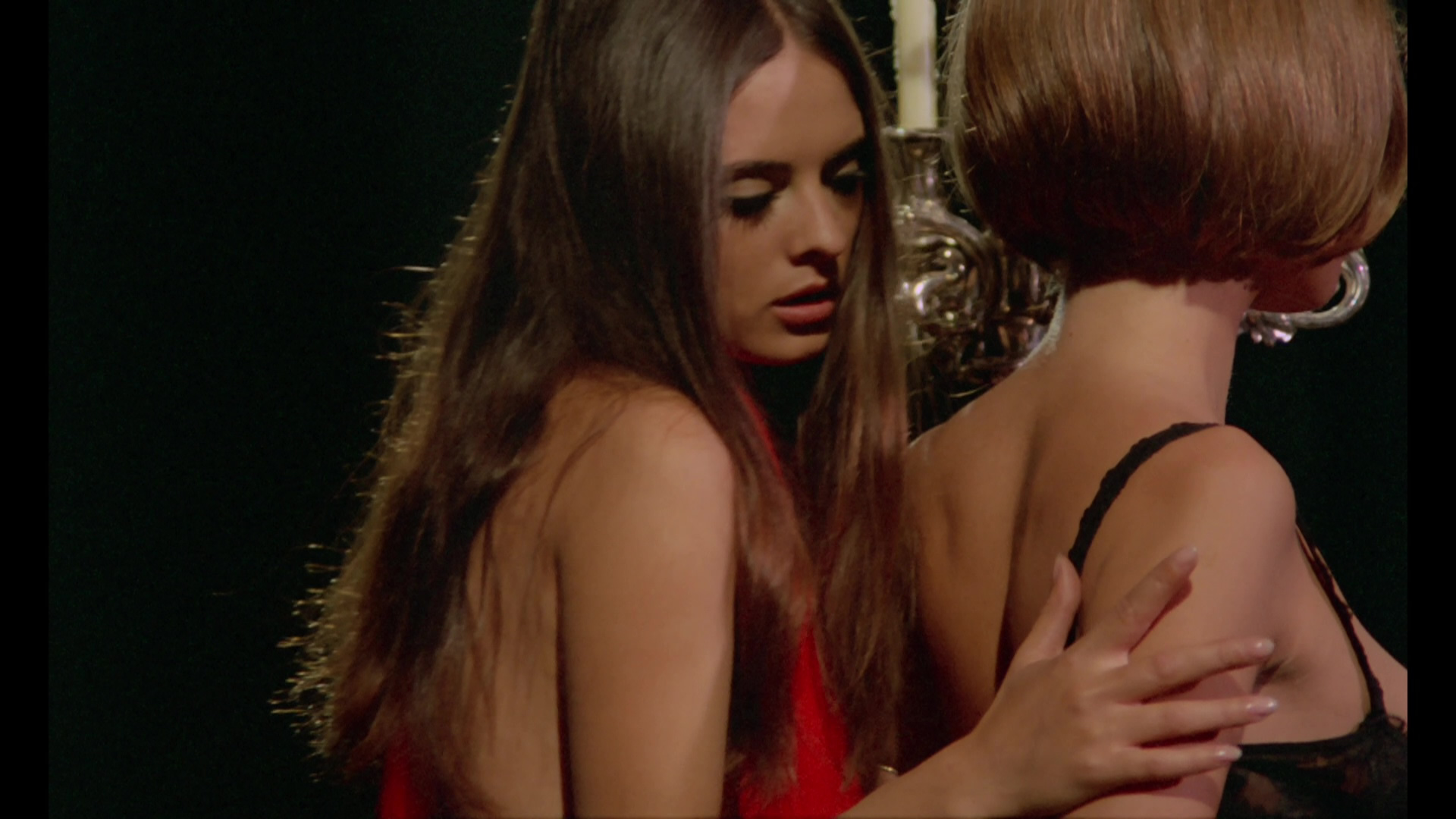
Few were the B-movie directors who were able to shoot a vast array of movies that would create a legacy. The director of the next film on the list, the Spanish Jesús “Jess” Franco, was one of them.
Franco directed nearly 150 films of all genres (his last one was shot in 2013, the year of his death). However, he is mostly remembered by his psychedelic but artistically-styled “sexploitation” films. One of these films, “Vampyros Lesbos”, is his best-remembered film. It tells the story of Linda Westinghouse, an American woman who has lesbian dreams with a female vampire. Once she travels to a deserted island, she finds her and finds out that she has been cursed. To end the curse, she must kill her.
“Vampyros Lesbos” is also representative of the “vampire exploitation” sexploitation flicks that represented eroticism through sensual vampires. Though it may not be regarded as a masterpiece, “Vampyros Lesbos” is the most popular film from one of the most prolific and prominent yet underrated filmmakers of the genre, Jess Franco.
13. Switchblade Sisters (Jack Hill, 1975)
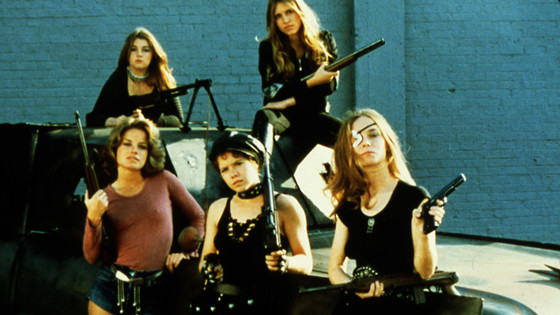
Many exploitation movies were made about mischievous, rebellious, and turbulent teen gangs. This 1975 chick flick from famous director Jack Hill is the perfect example of the teen gang genre. The “Switchblade Sisters” from the title are an all-female gang from a “post-apocalyptic Nixon era” called “The Dagger Debs”. Commanded by the rebellious Lace, and her second-in-command Patch, a vicious one-eyed blonde beauty, they work alongside the “Silver Daggers”, an all-boys gang commanded by Dom, Lace’s boyfriend.
The film starts with the inclusion of Maggie in the Debs, something that will eventually bother Lace, as she sees her position of leader at stake. This tension will make Lace and Patch to carry out an “Othelloesque” scheme against the new girl that will interfere with the main conflict from the movie: a gang war between the Debs and the Daggers against gang rival Crabbs. All of this will only end in the way good exploitation movies do – in an explosive, absurd, and over-the-top way.
This cult classic contains everything the teen gang genre needs: hierarchical clashes, a Shakespearean war with a rival gang, peculiar costume design, knife fights, and red-blooded shootings.
However, what makes Hill’s movie different from the rest is the unique character design; what should be plain, flat-layered characters here are ambitious, double-crossing, and resourceful characters who are surprisingly good portrayed by the actors. The well-balanced pace of the film and the inclusion of features from other grindhouse subgenres (a funny and laughable Women-in-Prison part and a blaxploitation part) are other elements that make this movie a sublime gem.
This movie is admired by directors such as Quentin Tarantino, who rescued and re-released this film under his “Rolling Thunder” label in the 90s, and may have had the character of Patch on his mind when he wrote Elle Driver from “Kill Bill”.
12. Ilsa, She-Wolf of the SS (Don Edmonds, 1975)
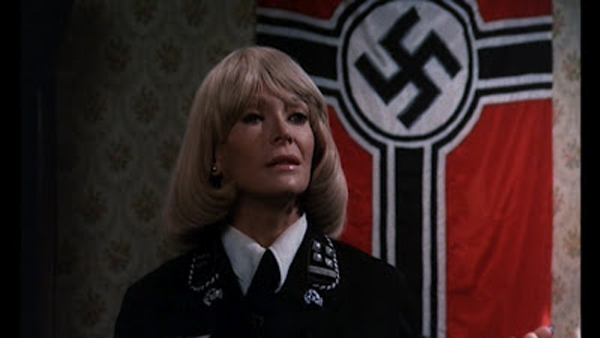
Perhaps this is the best known example for both the “Nazisploitation” and the “Women in Prison” (“WiP”) genres, so basically this film is about hot Nazi wardens torturing innocent caged people. Yes, like most of the sexploitation movies, this movie and this subgenre include a vast majority of scenes featuring soft-core sex and nudity.
There is not much of a plot; Ilsa is the sadistic Aryan warden of a Nazi concentration camp. She is set to conduct absurd and futile experiments on women to find a pain-enduring woman. Meanwhile, a jailbreak is planned among the male prisoners.
Nazisploitation was a subgenre of the of the WiP subgenre. However, it relied more on sadism and degradation than most of the movies from the genre, both as a reflection and criticism of the sad but true attitude of the Nazi military. It comes to the viewer’s mind the sadistic experiments performed by Nazi doctor Josef Mengele.
Perhaps this was the true point of the genre, to point out the absurdity of those ideals. “Ilsa, She-Wolf of the SS” began its own saga, but is considered a cornerstone for Nazisploitation.
11. Foxy Brown (Jack Hill, 1974)
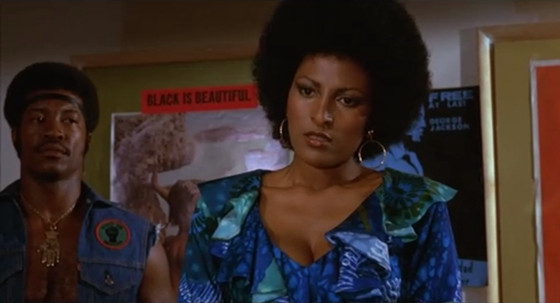
If we are talking about the most influential B-movies, we have to mention an example of one of the most prolific and famous B-movie industries of all time: blaxploitation. “Blaxploitation” (“black” + “exploitation”) was the black B-movie industry. Its films always featured colored characters interpreted by black actors who lived in black neighborhoods or ghettos in large American cities.
As a reflection of the racial conflicts and issues that arose at the time, blaxploitation movies told stories about rebellious but good-hearted black characters fighting against injustices, mainly represented by whites or by corrupt black gangsters that polluted the neighborhood. They were often helped by street “black power”-like gangs
“Foxy Brown” includes every one of these features. Foxy Brown, portrayed by the most representative actress of the genre, Pam Grier, is the girlfriend of a presumed dead black cop. When he and her brother are shot dead by drug dealers Steve Elias and Miss Katherine, who run a cover-up modeling agency, she tenaciously sets to kill them and in addition, destroying the drug empire that is perverting neighborhood youth.
Questioned in the film if she wants justice when she’s looking for aid in her crusade, she answers that “it could be your brother too, or your sister or your children.” This sentence summarizes the criticism point of this genre, a genre that features other famous movies like “Coffy”, “Shaft”, “Sweet Sweetback’s Badasssss Song”, and “Jackie Brown”, the movie Quentin Tarantino dedicated to the genre starring Pam Grier.
10. Faster Pussycat! Kill! Kill! (Russ Meyer, 1965)
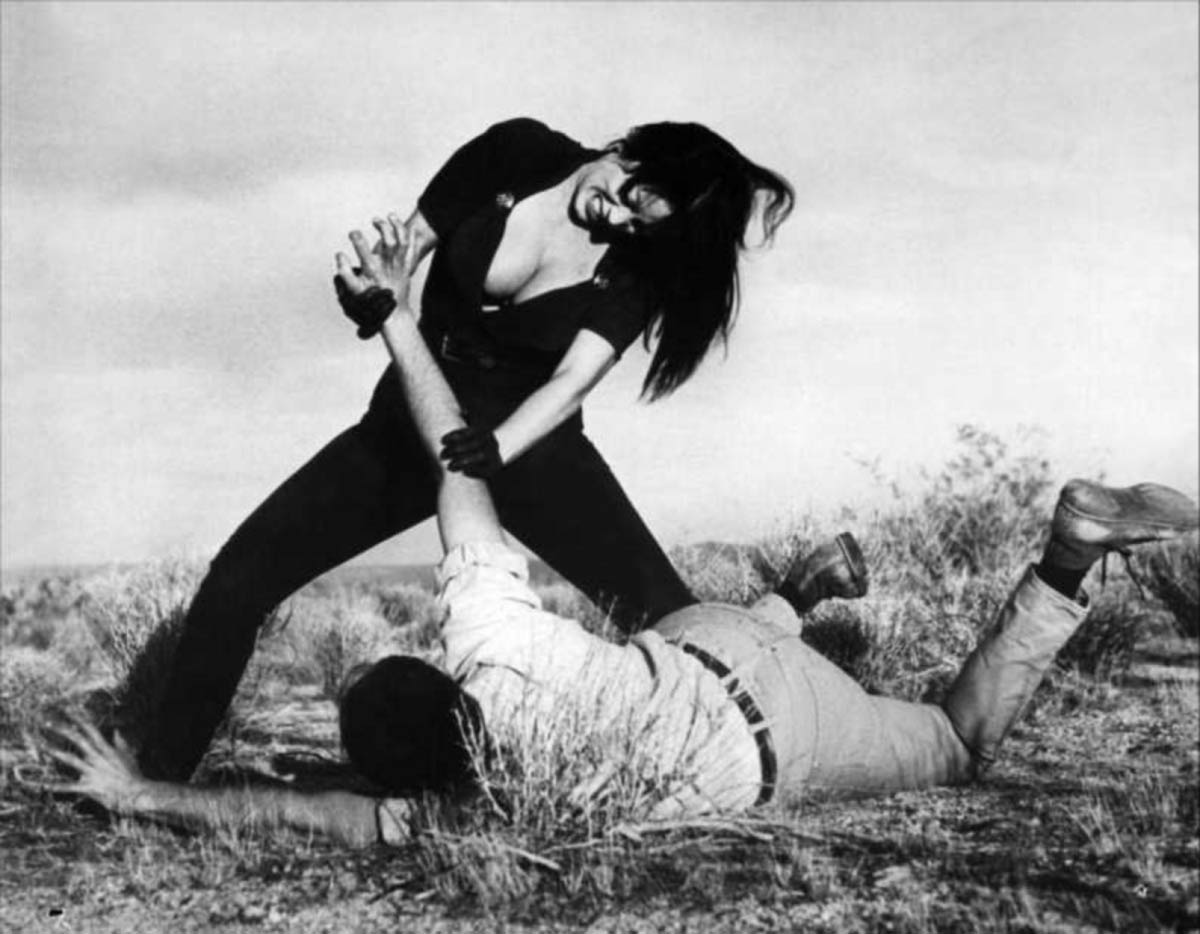
Many B-movies have narrated controversial issues under a critical eye. However, who was going to tell to Russ Meyer, a guy who loved cars, big breasts, and sex, that one of his movies would become a feminist icon?
That is “Faster Pussycat! Kill! Kill!”, a film that proved that sexy women with big breasts could also be bad and treacherous. The film introduces us to Billie, Rosie, and Varla, three go-go dancers who like cars.
The main plot of the film develops in the most absurd way; the three chicks go racing and find a young couple, Tommy and Linda. They race against the young boyfriend, but when the race ends, Varla fights Tommy and breaks his neck. Then, they kidnap Linda and end up in the house of a gas station owner, who owns a satchel full of money. Finally, the chicks pretend to steal from him, but of course, many odd things happen and the girls turn against each other.
Simple but absurd, right? That was the style of many of Meyer’s movies, a director who featured stunning big-breasted women, a campy style, and very dark humor. His movies belonged to the “sexploitation” genre, whose films focused on non-explicit sex scenes and gratuitous nudity. However, “Faster Pussycat! Kill! Kill!” is considered to be one of the most important “sexploitation” films, though believe me, there are not as many nudes in this movie as there are in Meyer’s other works.
Nevertheless, this movie shows that women have not only big breasts, but that they can be as mean as their male counterparts. Perhaps that is why this film has earned a feminist cult following over the years. Apart from this, “Faster Pussycat! Kill! Kill!” is a favorite movie of the campy director John Waters, as well as a personal favorite for Quentin Tarantino, both reasons why this movie should be recognized on this list.
9. Cannibal Holocaust (Ruggero Deodato, 1980)
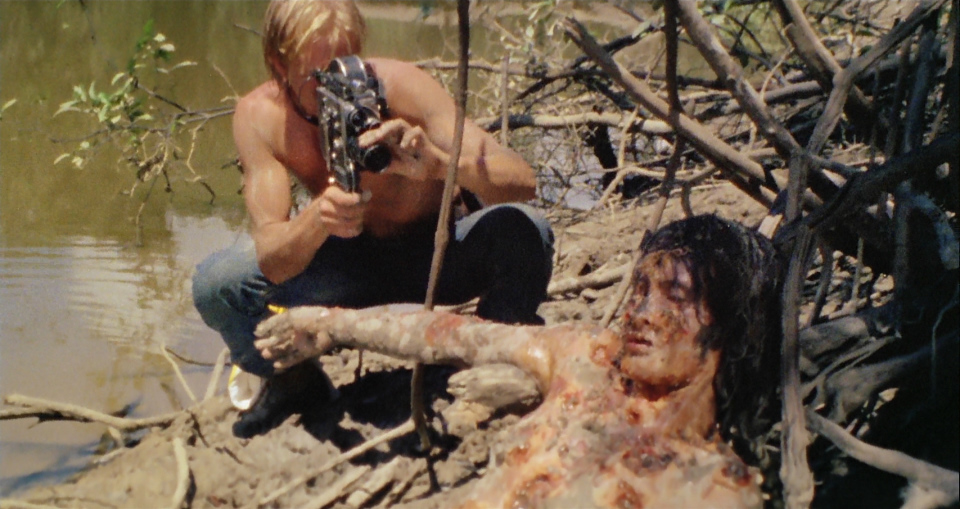
Probably more known for its controversy (the director was judged under charges of actually killing the actors in the same way the movie depicts), “Cannibal Holocaust” is interesting for various reasons. First, it is the best film of the “cannibal” subgenre, one of the most shocking, gruesome, gory, and controversial exploitation genres. Secondly, the movie criticizes modern civilization’s views on third world societies. And thirdly, it is one of the first movies to introduce the found-footage method of shooting.
The action of the movie relies on pure graphic violence, so there is not much of a plot; a group of executives discusses making public the images that have been found by one of them. They belong to a film crew who disappeared in the Amazonas and who were sent to film indigene tribes. The movie subsequently shows us the atrocities they witness: disfigured and mutilated native bodies, impaled girls, and more brutal dangers.
However, it also shows the cruelty of the film crew toward the animals of the jungle and the disrespect they show. The plot ends with a really hard-to-watch tour de force; they are captured by the natives and are the object of inhumane acts. Back with the executives, they decide not to show the film and the film ends with one of them wondering who the true cannibals are, the natives or the equally violent crew.
Both hated and appreciated (Sergio Leone himself liked the film), “Cannibal Holocaust” remains one of the most controversial films of all time, but it is also a significant movie for the grindhouse and the B-movie industry.